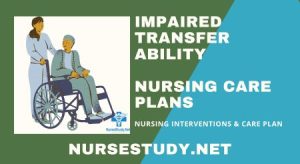Risk for Vascular Trauma Nursing Diagnosis
Nanda Nursing Definition: Risk for Vascular Trauma is a nursing diagnosis that refers to the vulnerability of an individual to injury or damage to the blood vessels, which can result in compromised blood flow and potential complications. Defining Characteristics: The defining characteristics of Risk for Vascular Trauma may include: Subjective: Objective: Related Factors: The risk … Read more





